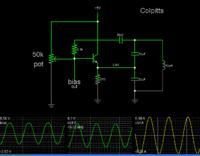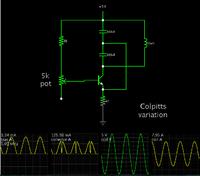uoficowboy
Full Member level 3

- Joined
- Apr 4, 2009
- Messages
- 169
- Helped
- 6
- Reputation
- 12
- Reaction score
- 5
- Trophy points
- 1,298
- Location
- Seattle, Wa, USA
- Activity points
- 2,964
For a resonant wireless charging system, I am looking at using a Class E driver. I've played around with some circuits on the web, and played around with values in LTSpice quite a bit - and there are a couple things that have really bothered me:
1. I have yet to find any clear derivation of values for the capacitors and inductors. Heck, I haven't even really found formulas - most papers point to specific design tools.
2. With the spice simulation that I've been using, I have both positive and negative current flowing through my switch. The waveform looks about what I would expect it to look like, but the negative current is somewhat disturbing. When I add more resistance in series with the tank inductor the current in the switch will become almost entirely positive. But in my desired system I really just want to push/pull tons of current through the tank inductor so resistance should be very small. I'm thinking I may just need to add back to back FETs (instead of using a single FET) - but would love to hear if anybody else has encountered this.
3. I am not clear on how to modulate the amplitude of the current in the tank inductor (L2). If I change the duty cycle of my PWM that is driving my switch, the tuning gets thrown completely off. I could change the supply voltage, but surely there is a better way? I do not need fast modulation - it is only so that I can respond appropriately to coils changing position with respect to each other.
Thank you in advance!!
Note: I have included a .JPG showing my simulation as well as a LTSpice file. I had to change the extension on the ltspice file from .asc to .txt. Please change it back to .asc after downloading it and you should be able to run it easily.
1. I have yet to find any clear derivation of values for the capacitors and inductors. Heck, I haven't even really found formulas - most papers point to specific design tools.
2. With the spice simulation that I've been using, I have both positive and negative current flowing through my switch. The waveform looks about what I would expect it to look like, but the negative current is somewhat disturbing. When I add more resistance in series with the tank inductor the current in the switch will become almost entirely positive. But in my desired system I really just want to push/pull tons of current through the tank inductor so resistance should be very small. I'm thinking I may just need to add back to back FETs (instead of using a single FET) - but would love to hear if anybody else has encountered this.
3. I am not clear on how to modulate the amplitude of the current in the tank inductor (L2). If I change the duty cycle of my PWM that is driving my switch, the tuning gets thrown completely off. I could change the supply voltage, but surely there is a better way? I do not need fast modulation - it is only so that I can respond appropriately to coils changing position with respect to each other.
Thank you in advance!!
Note: I have included a .JPG showing my simulation as well as a LTSpice file. I had to change the extension on the ltspice file from .asc to .txt. Please change it back to .asc after downloading it and you should be able to run it easily.
Attachments
Last edited:




